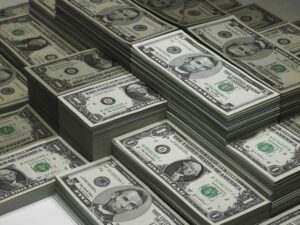U.S. Dollar Strengthens as Powell Pushes Back on Large Rate Cuts
The U.S. dollar firmed against major currencies on Tuesday after Federal Reserve Chair Jerome Powell signaled a slower pace for interest rate cuts. Powell’s remarks came during a conference in Tennessee, where he emphasized that the central bank would likely stick to smaller, quarter-percentage-point cuts going forward.
“This is not a committee in a hurry to cut rates quickly,” Powell stated, casting doubt on the market’s expectation of more aggressive rate cuts. Despite this, traders still anticipate another rate cut in November, although expectations for a 50 basis-point cut have dropped to 35.4% from 53.3% according to CME Group’s FedWatch Tool.
Yen Holds Steady Amid Japan’s Leadership Change
The yen remained stable after two volatile trading days, sitting near the middle of its monthly range against the dollar. Traders are assessing Japan’s incoming Prime Minister Shigeru Ishiba, who is viewed as a monetary policy hawk. Ishiba, who won his party’s leadership vote on Friday, is seen as maintaining Japan’s dovish economic policies despite his toned-down rhetoric on policy normalization.
The dollar rose 0.45% to 144.27 yen, with analysts predicting that the Bank of Japan’s dovish stance will continue under Ishiba’s leadership. According to Andy Ji, senior Asia FX strategist at InTouch Capital Markets, “the BOJ’s dovish lean gets the government blessing, and the current USD/JPY trading strategy remains to buy on dips.”
Euro Stable After Drop in German Inflation
The euro traded near Monday’s one-week low following a dip in German inflation to its lowest since 2021. This decline fueled speculation of another European Central Bank rate cut this month. The euro was mostly unchanged at $1.113575, after reaching as low as $1.1113 in the previous session. ECB President Christine Lagarde expressed optimism that inflation would return to target levels soon, with more details expected during the Oct. 17 policy meeting.
Australian Dollar Edges Higher on Strong Retail Sales
The Australian dollar gained 0.09%, trading at $0.69185, nearing its 1-1/2 year peak of $0.6943. This uptick followed better-than-expected retail sales in August, indicating robust domestic demand. The Australian economy continues to show resilience, with retail sales rebounding stronger than anticipated.
New Zealand Dollar Slips Amid Broader Market Trends
The New Zealand dollar traded down 0.47% at $0.6322, reflecting broader market trends. The kiwi has struggled to maintain momentum despite positive economic data from its neighbor, Australia.
Conclusion: U.S. Dollar Outlook Amid Key Economic Data
Looking ahead, the U.S. dollar’s performance will be influenced by upcoming key economic data, including the Institute for Supply Management’s manufacturing index and the monthly jobs report. If the data beats expectations, the dollar could see further gains before resuming its broader downward trend. The dollar index was up 0.1% at 100.82 as of 0403 GMT, after rising 0.3% on Monday.




















